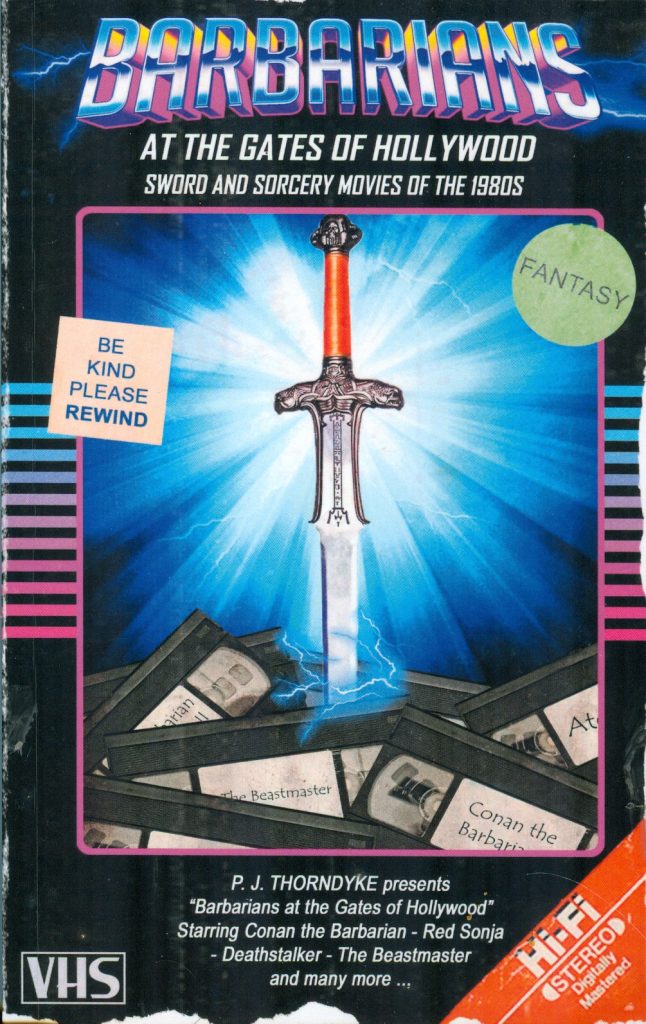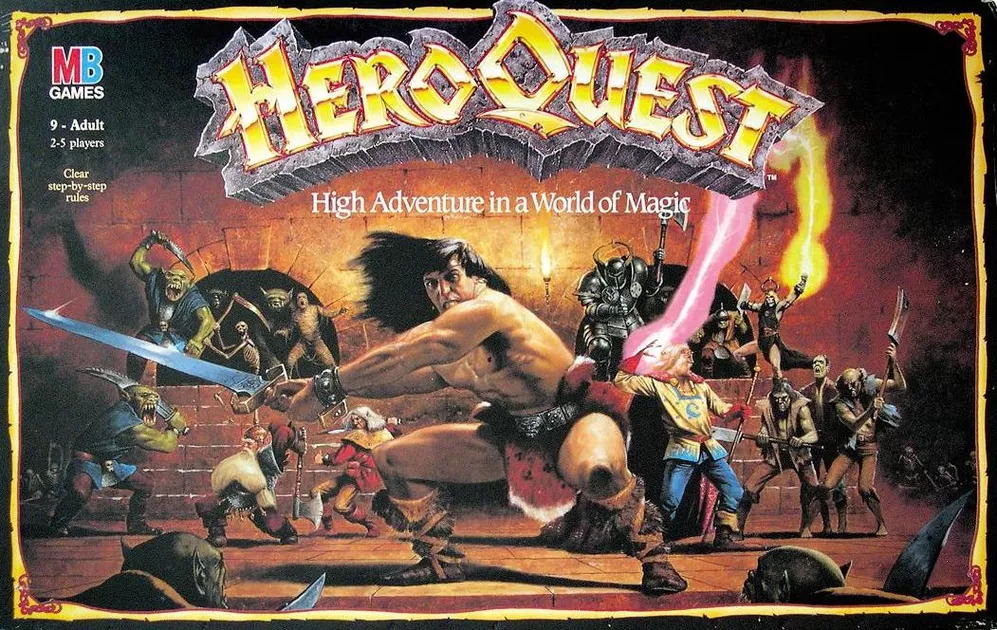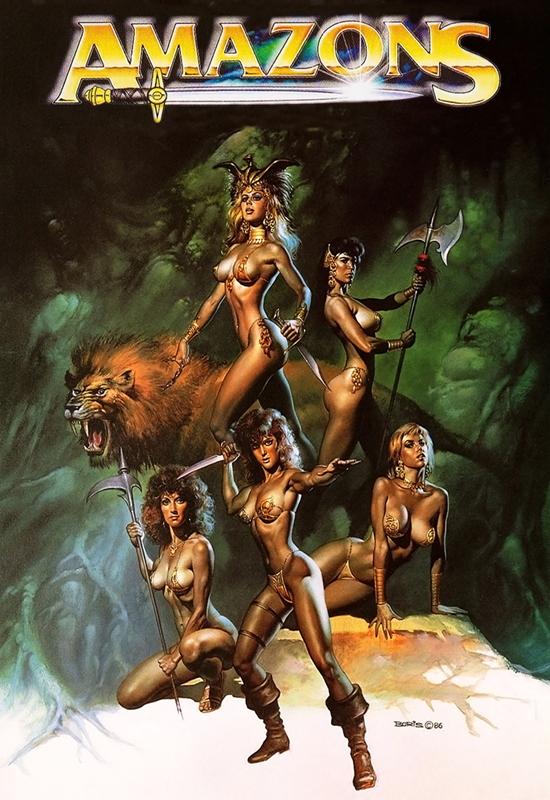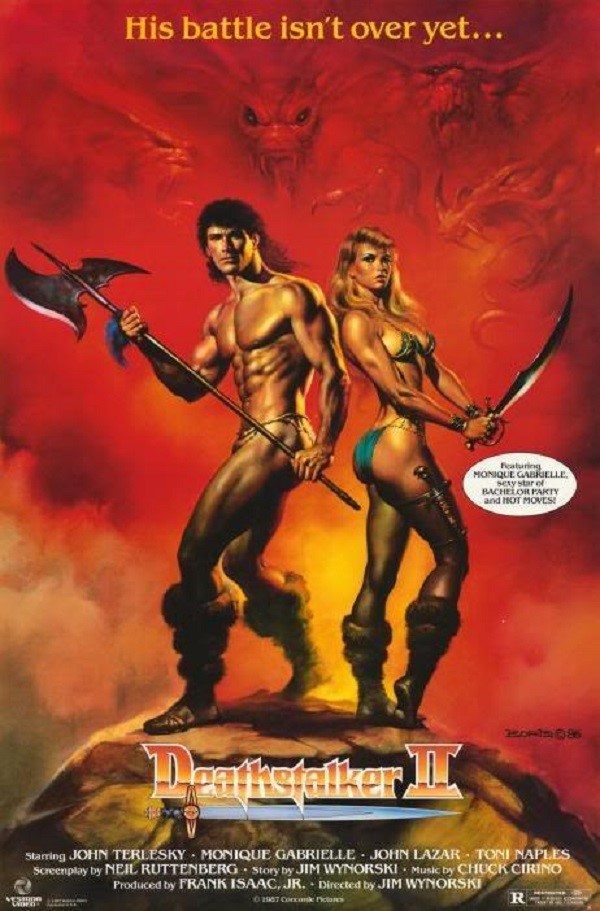 The sword-and-sorcery movie boom of the early 1980s did not last long. I was there and saw some of the movies when they came out. I knew when I saw Red Sonja in summer 1985 that it was over.
The sword-and-sorcery movie boom of the early 1980s did not last long. I was there and saw some of the movies when they came out. I knew when I saw Red Sonja in summer 1985 that it was over.
Barbarians at the Gates of Hollywood by P. J. Thorndyke is an entertaining history and look of the sword-and-sorcery movies of the 1980s. This is a soft-cover book, 5 x 8 inches, 194 pages published in 2020.
The cover is well done to look like an old VHS cassette slipcase. The foreword by Thorndyke mentions him seeing the art for a board game called HeroQuest when he was six or seven years old. Art was by Les Edwards.
“What I saw in the HeroQuest box art that day both typified and distilled everything I loved about sorcery and swordplay into one image and I never forgot it.”

The introduction is what is sword-and-sorcery? A section entitled “Influences” give a quick history of sword-and-sorcery in paperback.
The first movie is of course Hawk the Slayer from 1980. I have not seen that in decades. There is generally a two to three page synopsis with each movie entry with a little analysis.
Of course, Conan the Barbarian from 1982 is probably the most important movie in this book.
“Schwarzenegger played Conan with an almost childlike innocence and, with only a handful of lines in the film, the character was far removed from the quick-witted, cunning and articulate warrior of the source material.”
“The Barbarians” from 1987 finishes first set of movies. The section “Influeces From Beyond the Stars” covers movies including Highlander and Masters of the Universe to the two Gor movies.
There is a section given over to Roger Corman and fare such as the Deathstalker movies. Charles Saunders had told me that Amazons based on his story “Agbewe’s Sword” was made in Argentina. I did not know there were five Corman movies made in Argentina in the mid-1980s. I also did not know that Charles Saunders wrote the screen play for Stormquest. I watched the Deathstalker movies last year on Tubi when on my Nordic Track machine (aka “The Human Hamster Wheel”).
“Spaghetti Sword and Sorcery–The Italian Connection” is a section for the Italian made sword-and-sorcery movies. I only remember renting the Lou Ferrigno Hercules back in the 80s on VHS. Apparently some of these movies have great scenery making use of Italian castles and medieval architecture.

Thorndyke has a concluding chapter where he mentions the Beastmaster movie from the early 90s and the Hercules and Xena T.V. shows.
This is a fun little book. It will come in handy next time I search Tubi for a movie to watch while on the Human Hamster Wheel. A good number of these movies are in The Psychotronic Encyclopedia of Film (a great book by the way). If you ever want to read sword-and-sorcery in prose influenced by these cheaper movies, check out D. M. Ritzlin’s Necromancy in Nilztiria.
I did a couple blog posts here and here on 1980s sword-and-sorcery movie posters.

It is amazing the cultural shift in the past 35-40 years looking at these movies with the men all muscular (and oiled) and the women right out of Playboy magazine and the swashbuckling adventure when done right and goofy exuberance in bottom tier movies such as Deathstalker II. It was a moment in time. I think the action movie helped kill the sword-and-sorcery genre. It did not help there was a silliness all too often. The broadsword got traded in for the Beretta M9 pistol.
Dear Lord but some of those movies were awful. You’re right about that cultural shift though.
I remember that, in marked contrast to the actresses who appeared in them, these films being given ample coverage at the time by Jim Steranko’s Prevue magazine. The former probably explaining the latter.
Something of a torch was carried by the mag for Hundra’s Laurene Landon especially.
And who could blame it.
Thanks for mentioning Necromancy in Nilztiria. Just to clarify, the only story I wrote under the direct influence of ’80s S&S movies (specifically Deathstalker II and Sorceress) is “Slave Girls for Sacrifice.” At the time I wrote it I was watching lots of the movies you mention on Tubi. It seems that by the end of the ’80s, these types of films turned into post-apocalypse/sci-fi, for example “Phoenix: The Warrior” and “Time Barbarians.”